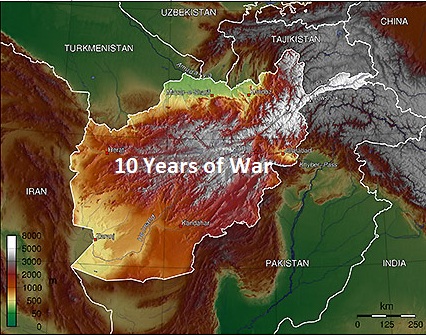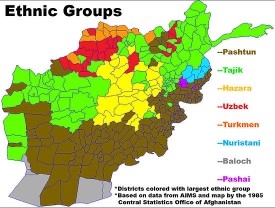Exclusive to SUA
By Kerry Patton, SUA Kitchen Cabinet Member
I told myself not to write an article about Afghanistan’s 10 year war anniversary. As the saying goes, “Momma always said that if you have nothing nice to say—say nothing.” Well, I have found that after serving in and out of the Af/Pak region for the past ten years, writing has become somewhat therapeutic. Many may not like what I have to say, but personally, I know the great majority of the tactical warfighters, the men outside the wire day in and day out and those sitting in remote outposts, will understand my points better than anyone.
September 2001 changed the lives for every American. Watching national news in my North Carolina home only minutes away from Ft. Bragg, I remember seeing the first plane crash into the World Trade Center. I woke up my roommate and immediately informed him that we were under attack. I grabbed my pager anxiously awaiting “the code” to grab my kit. As we both drank coffee watching the second plane hit, witnessing Americans taking their last leap of faith, out the windows of those buildings prior to their collapse, “Ack” and I sat in complete amazement. As we both sat in awe, my hands profusely sweaty, holding that pager knowing soon, the alarm would sound.
Of course with due time, that pager sounded. What normally took only a few minutes to get through Riley Gate now took hours. Local news informed the entire Ft. Bragg populace to stay home and only essential personnel needed to be on base. We were at war.
In only a few weeks, U.S. Special Operations staged units all across Central Asia and the Middle East. Some were on aircraft carriers, others were on U.S. mega bases, and a select few created their own safe houses in remote lands near the Afghan border. Intelligence inside Afghanistan was weak at best. We relied heavily on foreign assets who had contact with unique anti-Taliban units like the Northern Alliance—again, virtually no assets were immediately inside Afghanistan.
With time, foreign assets assisted in source development, later used to work alongside our Special Operatives and their civilian counterparts inside the CIA. This process moved like lightening because within weeks of not having any worthy “in-country assets” the U.S. was capable of building an entire localized unified Afghan force ready to topple the Taliban regime.
That localized force, contrary to popular belief, wasn’t just the Northern Alliance. There were Afghans from Uzbek, Tajik, and other ethnic populations ready and willing to defeat their longtime radicalized Deobandi Islamic enemy—the Taliban.
 Within only a few hard months, the Taliban retreated into the mountainous regions of the Afghanistan/Pakistan border due to a barrage of military might. The initial mission was a complete success—Taliban were no longer in control of the country. By the end of 2002 or early 2003, everything started to go ass backwards.
Within only a few hard months, the Taliban retreated into the mountainous regions of the Afghanistan/Pakistan border due to a barrage of military might. The initial mission was a complete success—Taliban were no longer in control of the country. By the end of 2002 or early 2003, everything started to go ass backwards.
A new Afghan political regime was created by the United States. We created a monster that would later prove an utter mistake due primarily to corruption. U.S. Special Operators who looked as if they had become Avatars of Afghanistan due to the wearing of local garb and lax grooming standards were soon ordered to shave and wear American military uniforms. Pizza Hut, Burger King, and other fast food luxuries made it onto bases and military police started handing out traffic tickets—nothing beats bringing garrison mentality into a war zone.
Conventional forces came into country with a force ready to clean house of the remainder pro-Taliban support mechanisms. Unfortunately, those conventional forces brought with them a very conventional attorney induced politically correct leadership—elitists from the military and State Department. ‘Rules of engagement’ (ROE) were set, and the mission dramatically changed—a hole would soon be dug virtually impossible for us to climb out of.
Nation building was not the focus in Afghanistan until the 2003/2004 timeline. By 2003, the first Provincial Reconstruction Team was operational in eastern Afghanistan. By 2006, PRT’s became official entities for the International Security Assistance Force (ISAF). Arguably, the PRT concept, which spends billions annually in reconstructing a nation that was never reconstructed after the Russian Afghan War, can be partially responsible for weakening the U.S. economy.
Tactical warfighters, not the FOB sitting hobbits often referred to as FOBIT’s, soon realized how asinine this war had become. They took every initiative to take the fight to the enemy only to find themselves often being refused artillery or air support due to some bureaucratic established ROE. Their lives were placed in grave danger. This caused many of them to forget everything they were taught in convoy operations, infantry, or other ground pounding, kick ass, and take names schoolhouses.
The enemy caught on to our tactics. They would shoot one or two rounds at a moving convoys, which often stopped in place contradicting every field manual. U.S. forces would return fire with thousands of rounds. Young children would rush around the vehicles picking up brass only later to be sold somewhere in Peshawar. Combat action badges would be awarded to every trigger puller during such engagements. In the end, such combat scenarios served the enemy as an economic adventure, depleting U.S. armament while simultaneously enriching localized disgruntled villagers.
PRT’s and conventional forces, often without ever realizing it, became their own worst enemies on the tactical battlefield. One group would do their best to “win the hearts and minds” while the other would attempt to destroy anything in its path. Joseph Nye’s “Soft Power” became a catch phrase later replaced with an oxymoronic concept of “Smart Power.”
Catch phrases became promotional items. Anyone listening could hear such ridiculous words by just sitting in tactical operation centers—Battle Rhythm, Battle Space, Organic Unit, Atmospherics, Human Terrain, Full Spectrum, Full Spectrum Operations, or Full Spectrum Warfighter, etc. Just this week, I learned of a new one which will likely replace Asymmetric or Unconventional threats—Hybrid Threats.
None of these catch phrases will assist in defeating the enemy. Intelligence is needed more than anything. That intelligence comes in two forms:
- Cognitive intelligence from the human mind and;
- the more national security type of intelligence often defined as a process of directing, collecting, analyzing, processing, producing, and disseminating information.
The first type of intelligence seems to be gravely missing among a great handful of military and political leaders. The second type has consumed in the technical predominantly relying on Signals Intelligence. Human Intelligence, well, that is virtually non-existent.
HUMINT has become a complete joke for the local Afghans. Due to an American risk adverse culture, today’s HUMINT has become one of two things—Interrogations or Walk-In’s. Media has decried interrogator operations claiming cruel and brutal tactics due to water-boarding stories. The public listened to our media and critics causing an uproar in today’s political spheres.
Walk-In’s had become money makers for the local populations. They turn in old weapons or homemade IED’s and make money for the exchange. Those who actually go outside the wire to collect intelligence on the locals are often forced to utilize military vehicles and more often than not conduct such operations in military style convoys—a complete blunder in real HUMINT tradecraft.
The list of idiotic issues in Afghanistan is endless. ROE’s, intelligence, promotions, ego’s, etc. have all hindered tactical success. Media is also partially responsible as they have socially conditioned many worldwide viewers in believing false realities—an issue we faced similarly during Vietnam. Shoot, most media pundits call people from Afghanistan “Afghani’s” without realizing an “Afghani” is a form of currency neglecting the real term to describe an individual from the country—an Afghan.
Yes, I am more than disgruntled after operating in Afghanistan. There are a million lessons to be learned from this poorly executed war. Books will be written on such issues, and who knows, maybe U.S. led operational flaws in Afghanistan may serve an actual purpose someday. Maybe Afghanistan is really just a scrimmage. Maybe Afghanistan is just a test and evaluation game played with service members lives for the real war. What that war is or where and when it will occur, no one knows. Maybe it will be Iran. If that is the case, hopefully a real leader within the United States, a football coach like a Paul William “Bear” Bryant type or a real military leader like George S. Patton, will show up and lead the fight—not some politically correct egotistical elitist like so many of those who destroyed the initial successes in Afghanistan.
With all this said, make no mistake; I support our troops like the majority of red, white, and blue die hard American patriots. They are my brothers and sisters in arms, and I love them equally as my own flesh and blood kin. I would do anything for them; a great many realize this, considering my own ongoing commitments in supporting them either inside war torn nations or in support capacities here inside the United States. My gripe is not the American tactical warrior—no, my gripe is the political correctness which hinders their successes. America is no more secure today than it was ten years earlier prior to the invasion of Afghanistan. Why–because America lacks real leaders willing to instill unprecedented chaos and havoc on our enemies.
Kerry Patton is a Stand Up America Kitchen Cabinet member and is the Co-Founder of the National Security Leadership Foundation, a non-profit organization pending 501c (3) status. He has worked in South America, Africa, the Middle East, Asia, and Europe, focusing on intelligence and security interviewing current and former terrorists, including members of the Taliban. He is the author of “Sociocultural Intelligence: The New Discipline of Intelligence Studies” and the children’s book “American Patriotism.” You can follow him on Facebook.

